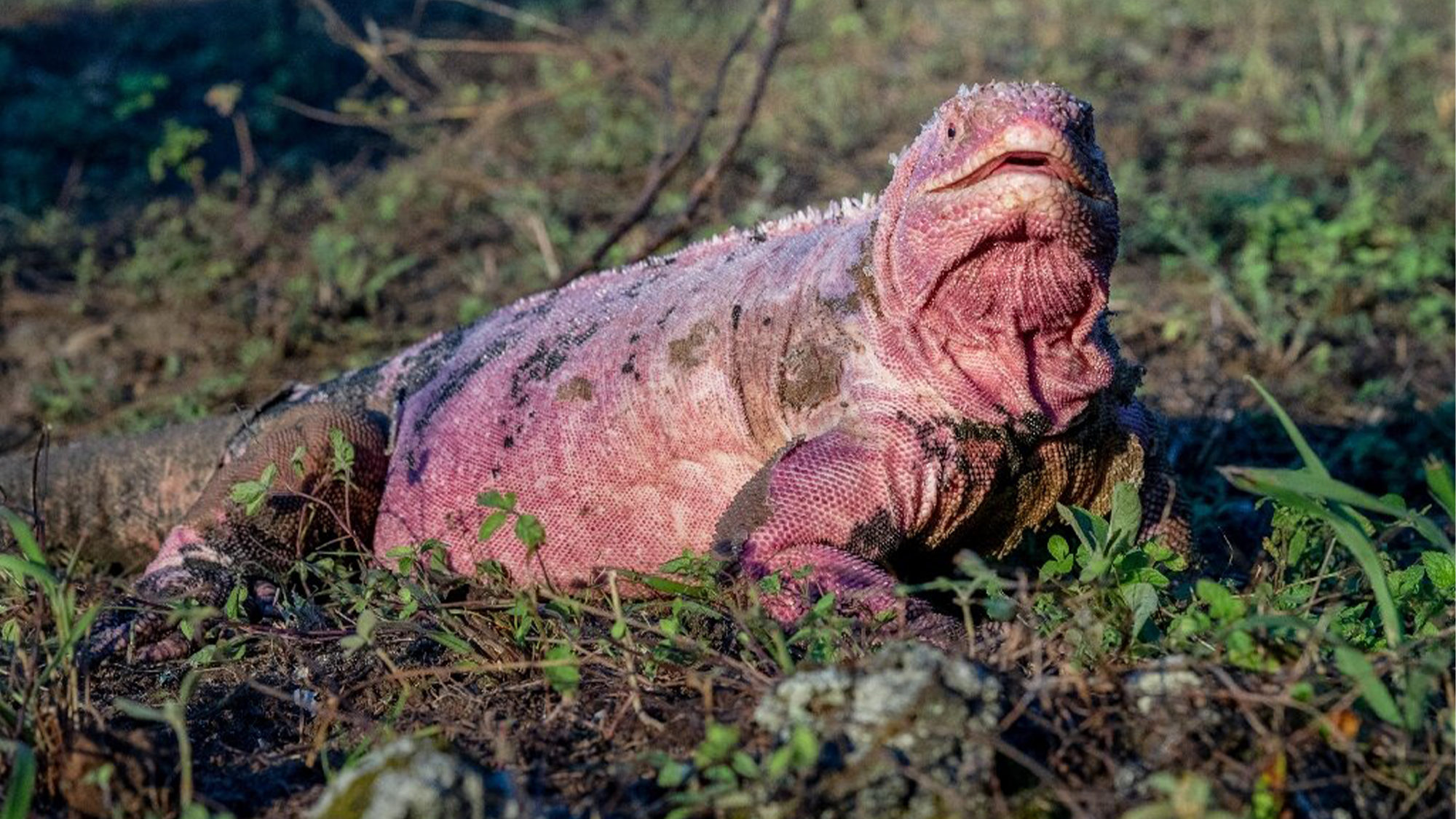

The Galápagos Islands in the Pacific Ocean off the coast of Ecuador are a playground for biodiversity. Particularly famous for their role in helping Charles Darwin and his theory of evolution in the 1830s and 1840s, it’s home to many species that aren’t found anywhere else on the planet. Giant tortoises, flightless cormorants, and three species of land iguanas are some of the many animals that only call these islands home.
One land iguana species is the critically endangered Galápagos Pink Land Iguana (Conolophus marthae), which is only found on Isabela Island, one of the 13 major islands in the archipelago. First discovered in 1986 and identified as a new species in 2009, there are only about 200 to 300 of these photogenic reptiles on the Isabela Island.
[Related: Rare, storied pink iguana discovered.]
For the first time since scientists found the species, hatchling and juvenile populations of the Galápagos Pink Iguana have been found. The iguanas live along the slopes of Isabela Island’s Wolf Volcano and stretch up to 18.5 inches long.
“This discovery marks a significant step forward, which allows us to identify a path going forward to save the Pink Iguana,” said Danny Rueda, the director of the Galápagos National Park, in a statement.
One of the most remote spots monitored by the Galápagos National Park, the Wolf Volcano is home to a research and monitoring station at its base. It’s a two day hike to the volcano where this last surviving Pink Iguana population lives.
According to the park, they are threatened by introduced species on the island, particularly rodents and non-native feral cats. Trail cameras have caught cats preying on young iguanas. According to the park, the young iguanas are easy prey after they’ve spent days digging out from their underground nests. The research teams suspect that cats have prevented juveniles from being brought into the adult Pink Iguana population for over several years.
“Knowing all the aspects that make their existence vulnerable will allow us to take timely actions, mainly against invasive species and thus avoid interrupting the natural cycles of these fragile ecosystems,” Rueda said.
[Related: The Galapagos might stay cool as the world heats up.]
Since October 2021 the Iniciativa Galápagos initiative between Galápagos National Park and Galápagos Conservancy has launched seven expeditions to better understand their status and threats. The trail cameras around the volcano have now documented evidence of nesting activities of Pink Iguanas. Additionally, the permanent field station at the Wolf Volcano has a 360-degree view which can help protect against wildlife trafficking and illegal poaching.
“The discovery of the first ever nest and young Pink Iguanas together with evidence of the critical threats to their survival has also given us the first hope for saving this enigmatic species from extinction,” said Paul Salaman, President of Galápagos Conservancy, in a statement. “And we’re so proud of our partnership with the Galápagos National Park that has yet again resulted in a huge stride forward towards saving the precious and unique biodiversity of Galápagos. Now our work begins to save the Pink Iguana.”